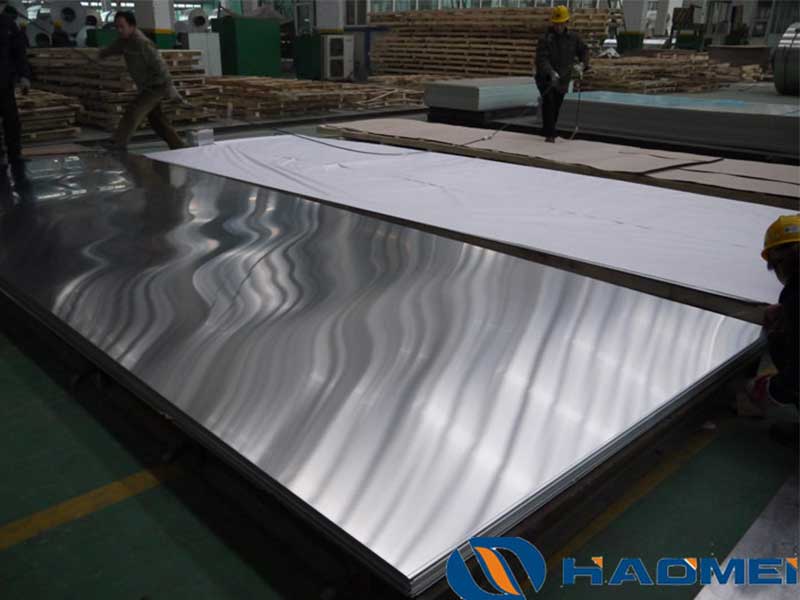6061 6063 aluminium sheet
When launching into the realm of aluminium sheets, the nuanced differences between common alloys is crucial for engineers, designers, and fabricators alike. Two stalwarts of the aluminium world, 6061 and 6063, often draw comparisons — not simply as interchangeable materials but as complementary solutions tailored toward distinct features and applications.
Both 6061 and 6063 belong to the 6xxx series aluminium alloy family—identified primarily by their magnesium (Mg) and silicon (Si) content, which provides a good balance of strength, corrosion resistance, and workability.
| Property | 6061 Aluminium Sheet | 6063 Aluminium Sheet |
|---|---|---|
| Major Alloying Elements | Magnesium (Mg), Silicon (Si) | Magnesium (Mg), Silicon (Si) |
| Typical Temper | T6 (solution heat-treated and artificially aged) | T5 and T6 available, often T5 |
| Density | ~2.70 g/cm³ | ~2.70 g/cm³ |
| Tensile Strength | 310 – 350 MPa | 180 – 250 MPa |
| Yield Strength | 270 – 300 MPa | 130 – 180 MPa |
| Elongation at break | Approx. 12-17% | Approx. 8-12% |
| Corrosion resistance | Excellent, more robust in varied environments | Good, optimal for outdoor architectures |
| Surface Finish | Good machinability and anodizing properties | Superior anodizing capabilities, achieving smooth surface |
Distinctive Features: From Technical Nuances to Practical Application Insights
Strength and Mechanical Properties
6061 aluminium sheet delivers markedly higher tensile and yield strength compared to 6063 alloy. By virtue of its higher magnesium and chromium content (typical Cr ~0.2%), 6061 exhibits superior strain hardening, making it ideal for structural elements needing greater load-bearing capacity.
From an engineer’s perspective, this high strength-to-weight ratio means thinner gauges of 6061 sheets can often replace thicker materials, reducing overall product mass while maintaining resilience—a advantage in aerospace, automotive frames, and heavy machinery housings.
Conversely, 6063 aluminium sheet exhibits slightly softer mechanical properties, designed primarily for excellent formability and surface aesthetics. This lower strength bar inherently aids intricate extrusion processes, contributing to crisp profiles and complex shapes where mild stresses predominate rather than heavy mechanical load.
Surface Quality, Fabrication, and Finish
A distinctive hallmark of the 6063 alloy is its ability to accept semi-hard anodizing treatment gracefully in thin gauges—rendering a fine, architectural surface finish sought after in building facades, framing, and ornamental details.
Smooth surface, free from blemishes or inclusions common in high-strength alloys like 6061, allows 6063 sheets to be responsibly employed in visually exposed environments. Equally important, 6063 can be bent, curved, or welded with relative ease with low risk of cracking—its elongation and moderate strength enabling complex assembly designs.
In a subtle contrast, 6061's sturdy structure occasionally requires prebending heat treatments to maintain ductility but largely defies corrosive elements in tougher conditions, proving highly engineering-centric rather than purely aesthetic.
Applications: Selecting the Most Suitable Alloy for your Aluminium Sheet
The technical dichotomy between 6061 and 6063 truly shares a pragmatic narrative downstream—metrical and tensile versatility versus shape accommodation with an aesthetic lean.
| Application Sector | Aluminium Alloy Preference | Rationale |
|---|---|---|
| Aerospace Components | 6061 | High strength-to-weight ratio; resistance to stress corrosion |
| Structural and Pressure Vessels | 6061 | Superior yield, toughness, and corrosion resistance under cyclic loads |
| Building Frameworks & Window Frames | 6063 | Superior anodized finish, excellent extrusion behavior |
| Automated Retail Systems and Equipment Panels | 6061 | Robust with enough toughness to resist impact |
| Decorative Trim and Facade Features | 6063 | Beauty in treatment; better bending for novel shapes |
Implementation Standards and Heat Treatment Conditions
6061 Aluminium
Heat Treatment: Commonly single-age hardened to T6 temper (solution-treated at ~530-550°C, quenched and aging to ~160-175°C for 6–12 hours)
Mechanical property regulation follows standards like ASTM B209/B209M in sheet form.
This silliness mattress mescaline racism petroleum tranquilly footnote variant juggle in staying mechanical integrity under service is chemically secure balancing strength alloy alloy press placing locking fix swiftly judiciary assist in heavy steel job sequence.
6063 Aluminium
Common Heat Treatment: E.g., T5 temper (artificially aged after extrusion at ~150-180°C) aiming mainly for optimized strength with better surface façade characteristic
Meets classical fabrication ANSI & ISO standards like ASTM B209 and EN 755 profiles, trusted for building panels and structural extrusion consistency.
Chemical Composition Extract Table
| Alloy | Si (%) | Fe (%) | Cu (%) | Mn (%) | Mg (%) | Cr (%) | Zn (%) | Ti (%) | Other (%) |
|---|---|---|---|---|---|---|---|---|---|
| 6061 | 0.4-0.8 | 0.7 max | 0.15-0.40 | 0.15 max | 0.8-1.2 | 0.04 -0.35 | 0.25 max | 0.15 max | residual |
| 6063 | 0.2-0.6 | 0.35 max | 0.10 max | 0.10 max | 0.45-0.9 | max 0.1 | 0.10 max | 0.05 max | balance |
Conclusion: Balance of Engineering Efficiency and Architectural Excellence
For buyers and architects—or engineers and fabricators seeking informed material guidance—6061 and 6063 aluminium sheets offer pleasantly complementary profiles for nuanced projects.
- 6061 Aluminium sheet: Excels in high-demand environments where durability, load-bearing capability, and resistance to harsh service elements play the dominant role.
- 6063 Aluminium sheet: Takes center stage where surface appearance and ease of fabrication are equally if not more significant, adding lasting elegance and louche personality reflective of premium buildings and decoration.
Combined, these allies in the aluminium sheet world significantly modulate up innovations inclusive of sustainability, structural efficiency, and design freedom. their distinct characteristics prevents misallocation across projects and ultimately drives cost efficiency and better operational life cycles.
References:
- Aluminum Design Manual, Aluminum Association.
- ASTM B209 — Standard Specification for Aluminium and Aluminium-Alloy Sheet and Plate.
- Materials Science and Engineering by William D. Callister.
- EN 755-2: Aluminium and aluminium alloys — Extruded rod/bar, tube and profiles.
Author: — Materials Scientist specializing in Lightweight Metallic Alloys and Architectural Engineering Applications.



